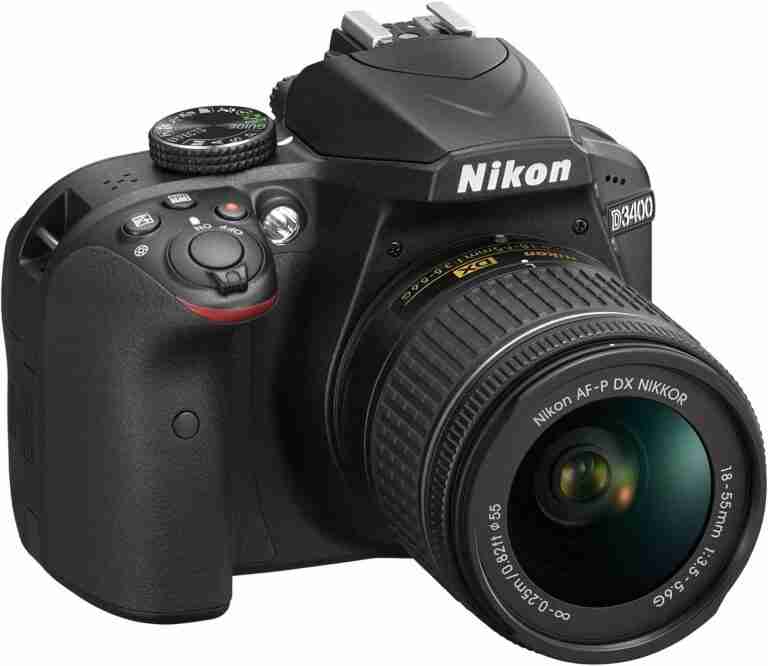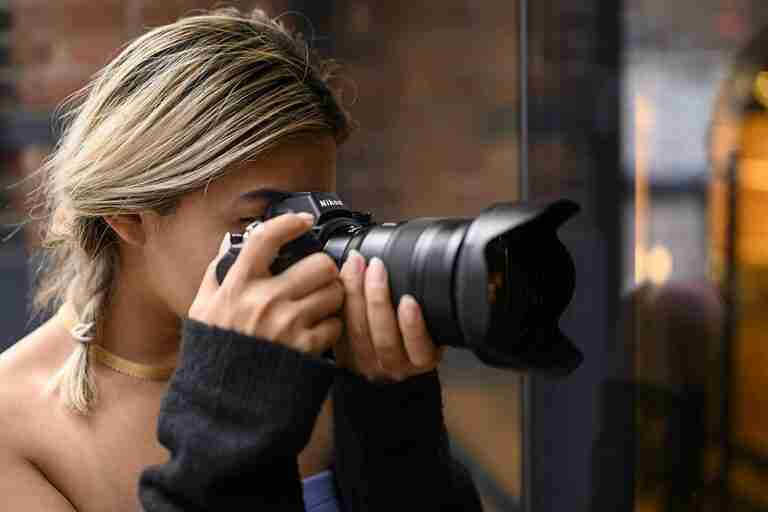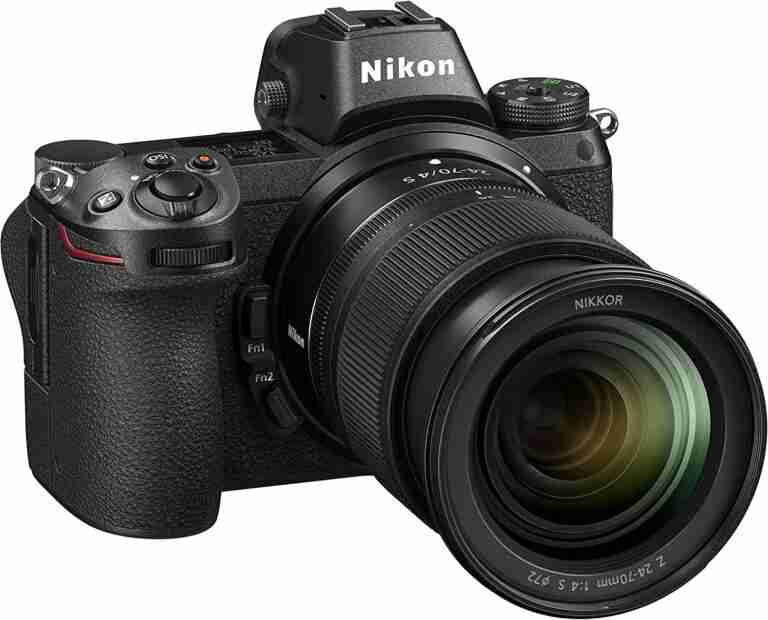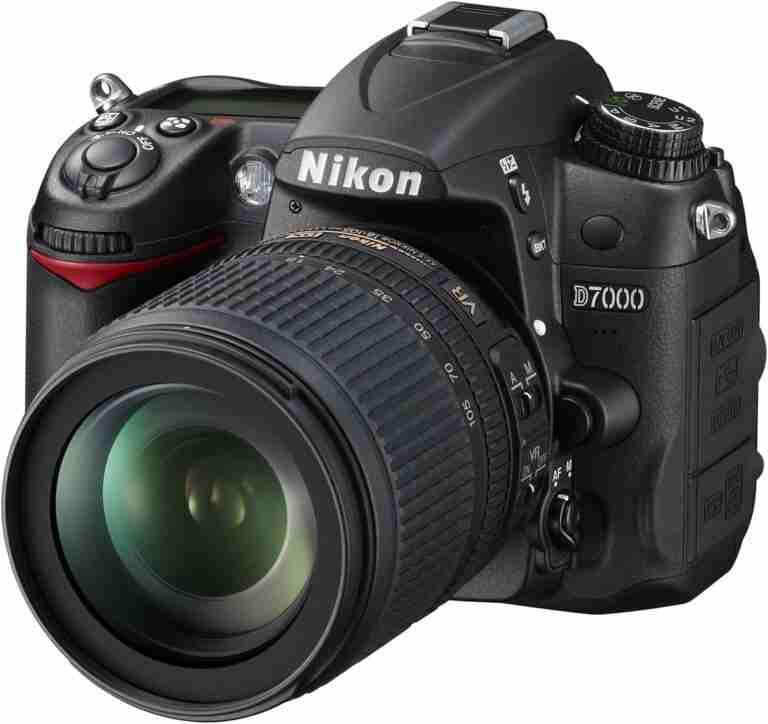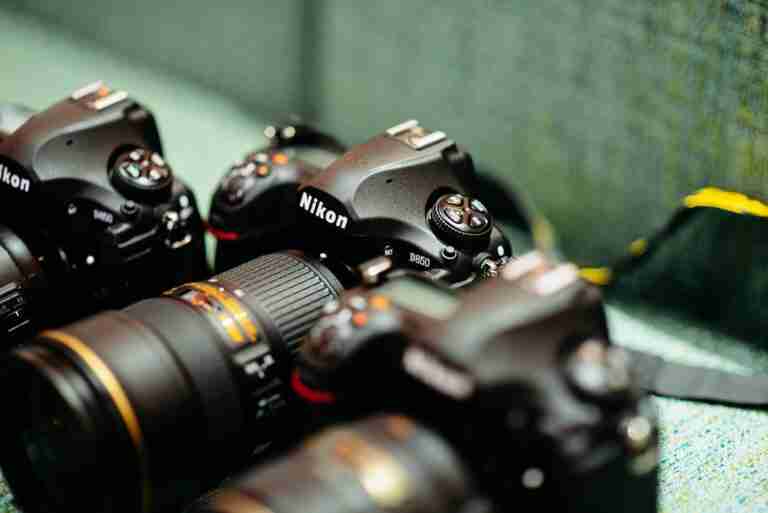5 Best Nikon Lenses For Astrophotography in 2024
You’re here for Nikon. For Lenses. For Best. For Astrophotography.
Right?
Well you’re in luck. That’s exactly what this guide is about.
Because you’re here, you know that Astrophotography is one of the most challenging yet rewarding categories of photo taking that there is.
Capturing breathtaking shots of the night sky is a magical experience that can be truly rewarding for anyone, whether you’re a pro wedding photographer or a new hobbyist.
The challenge lies in finding the perfect combination of camera and lens to achieve sharp, detailed shots of astronomical phenomena.
Nikon is an OG in the game with some OP lenses. It shouldn’t come as a shock that they’ve got some excellent options that match well to your needs for these kinds of shots.
For the impatient among you, here’s a quick overview at a glance of the best lenses:
| Lens | Use Case | Latest Price |
|---|---|---|
| Sigma 17-50mm f/2.8 OS HSM | Best Overall | Check Price |
| Nikon AF-S DX NIKKOR 35mm f/1.8G | Best For Beginners | Check Price |
| Nikon AF-S DX NIKKOR 18-55mm f/3.5-5.6G VR | Best Budget Option | Check Price |
| Nikon AF-S NIKKOR 200-500mm f/5.6E ED VR | Best Telephoto | Check Price |
| Nikon NIKKOR Z 14-24mm f/2.8 S | Best Wide Angle | Check Price |
With that in mind, and without further ado, let’s take a journey to uncover the top Nikon lenses for astrophotography and what they uniquely have to offer.
Contents
How To Tell Which Lens You Need
Navigating the celestial sphere with a Nikon lens for astrophotography is like charting a course through the stars—exciting and full of potential discoveries. This isn’t a complex science lecture; it’s more like preparing for a night under the stars with your camera as your telescope.
Imagine capturing the Milky Way in all its glory, or the delicate dance of a distant nebula. It’s not merely about taking a photo; it’s about capturing the universe in a way that speaks to the soul, turning the infinite into something palpable.
Let’s unpack the equipment that’ll help you chart the heavens:
Focal Length
In astrophotography, focal length takes on a cosmic significance. Wide-angle lenses (with short focal lengths, less than 35mm) invite you to capture the expansive beauty of the Milky Way or a meteor shower, bringing the vastness of space into your frame. On the flip side, longer focal lengths (over 70mm) allow you to zoom into celestial objects, like the moon’s craters or a distant nebula, making them the heroes of your night sky narrative.
Aperture
The aperture of your lens can be likened to the eye of your camera, dictating how much light you let into your shot. In the dim conditions of night sky photography, a lens with a wide aperture (a small f-number, such as f/1.8) is your best friend, capturing more light and revealing the intricate details of the stars or galaxies. This wide aperture also aids in achieving a shallower depth of field, bringing a dreamy quality to celestial objects against the pitch-black sky.
Prime vs. Zoom
When stargazing through your lens, consider whether a prime or a zoom lens suits your cosmic journey. Prime lenses, with their fixed focal length, are the luminaries, offering superior sharpness and excelling in low-light conditions—ideal for those clear, detailed shots of the stars. Zoom lenses, meanwhile, provide flexibility in framing your celestial subjects, from the wide, star-studded skies to the detailed crescent of the moon, all without needing to swap out your gear in the dark.
Sensor Size
The sensor size of your camera acts as the canvas for your nocturnal masterpiece. Cameras with larger sensors (full-frame) are the astronomers’ choice, capturing more light and offering a wider field of view—essential for sprawling nightscapes. However, cameras with smaller sensors (crop) have their own advantage, effectively extending the reach of your lens and bringing distant stars a little closer to home.
Image Stabilization
Capturing the night sky’s serene beauty often means long exposure times, where even the slightest movement can turn a star into a streak across your photo. Here, image stabilization is akin to the steadying hand of Galileo, ensuring your shots remain sharp and clear, whether you’re perched on a windy hilltop or balancing on an uneven rock in the wilderness. It’s especially crucial for handheld shots or when you’re zooming in on distant celestial bodies.
By considering these five celestial guides—focal length, aperture, prime vs. zoom, sensor size, and image stabilization—you’re not just choosing a lens; you’re equipping yourself for an astronomical adventure. With the right lens, the night sky becomes not just a subject of your photography, but a story waiting to be told. So, gear up, and let the cosmos be your muse.
Top 5 Nikon Lenses For Astrophotography – Ranked
Venturing into the realm of Nikon lenses for astrophotography is akin to embarking on a stellar journey—daunting yet thrilling, with a guarantee of awe-inspiring results along the way.
We’re here to navigate the cosmos of choices and spotlight the top 5 lenses that don’t just hit the target; they shoot it into orbit.
Whether you’re an astrophotography virtuoso or an eager stargazer, these selections are set to transform your night-sky captures from impressive to utterly celestial.
1. Sigma 17-50mm f/2.8 OS HSM – Best Overall
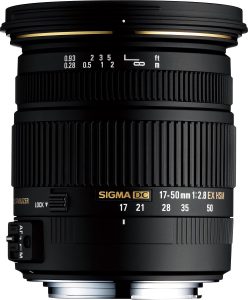
Stepping into the world of astrophotography with the Sigma 17-50mm f/2.8 OS HSM feels like unlocking a treasure chest of visual wonders. This lens, touted as the best overall, promises versatility that breathes life into stars and galaxies, with a zoom range perfect for capturing the grandeur of the night sky. Its wide aperture and Optical Stabilization pave the way for crystal-clear, sharp images, making every cosmic moment a masterpiece waiting to be discovered.
Unique Features:
- A zoom range of 17-50mm, offering a versatile canvas for capturing everything from grand landscapes to intimate celestial details.
- The f/2.8 wide aperture, ensuring your stars twinkle against beautifully blurred backgrounds, with superb performance in low-light conditions.
- Optical Stabilization, the guardian against the trembles, ensuring that your cosmic dances are captured in nothing less than stellar sharpness.
- Aspherical elements stand guard against distortion, ensuring that every celestial body is portrayed in its true, unwarped glory.
- An inviting price tag, proving that stepping into astrophotography doesn’t require a journey to the ends of your wallet.
The Good Stuff:
- Its flexible zoom range becomes your telescope to the cosmos, offering a variety of perspectives from your earthly viewpoint.
- The wide aperture is like the lens’s own nocturnal eye, mastering the art of low-light photography and capturing the night in its true, vibrant colors.
- Image stabilization acts as your steady hand in the quiet, chaotic beauty of the night, ensuring clarity in your captures even as the Earth moves beneath you.
- A commendation for image quality that punches above its weight, especially when you consider the cost of admission.
- Its lightweight and compact design means it won’t be a burden on your nocturnal adventures, ready at a moment’s notice to capture the universe’s fleeting moments.
The “Meh” Parts:
- Not your gateway to the microscopic, as its macro capabilities are limited. It’s about the grandeur of the cosmos, not the minutiae.
- While its sharpness can pierce the night, some higher-end primes might still outshine it in the clarity of their cosmic captures.
- Its plastic build, though light, may not feel as enduring as the celestial bodies it captures, a reminder of the earthly origins of our tools.
Overall Score: 43 (out of 50)
2. Nikon AF-S DX NIKKOR 35mm f/1.8G – Best For Beginners
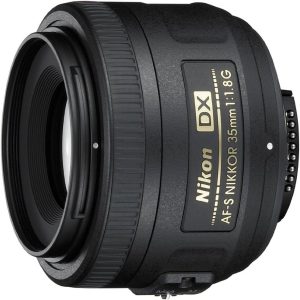
Stepping into the world of astrophotography can be a bit like trying to navigate a dark room—exciting but a tad overwhelming. Enter the Nikon AF-S DX NIKKOR 35mm f/1.8G: a beacon for beginners. With its friendly price, lightweight design, and a knack for capturing the night sky in stunning clarity, it’s about to make your nocturnal adventures as exhilarating as a midnight espresso run.
The Good Stuff:
- Sharp image quality that punches above its weight class, especially considering it’s a budget lens. It’s like getting a Michelin-star meal at a diner price.
- Excellent low-light performance with that wide aperture acting like night-vision goggles for your camera, illuminating stars as if they’re right in front of you.
- Smooth background blur (bokeh) that turns your portraits into works of art, minus the need for an artist’s studio. It’s all about adding that pro touch without the pro price tag.
- User-friendly for those of us who prefer to get straight to shooting without wrestling with the manual.
- Value that’s hard to beat, giving you more bang for your buck than a clearance sale at a tech store.
The “Meh” Parts:
- Plastic lens mount that might not feel like it’s going to survive an apocalypse, but hey, it’s what’s inside that counts, right?
- Not weather-sealed, so maybe don’t take it storm-chasing.
- Autofocus speed that won’t win races against pricier models, but it gets you to the finish line with dignity.
- 35mm focal length a bit too wide for those intimate portraits, but perfect for capturing the grandeur of the cosmos.
- No image stabilization, so you might want to invest in a tripod or practice your statue impression.
Overall Score: 38/50
3. Nikon AF-S DX NIKKOR 18-55mm f/3.5-5.6G VR – Best Budget Option
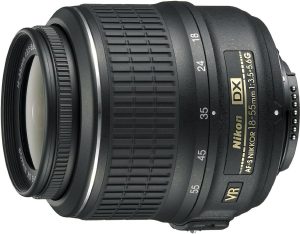
Navigating the cosmos on a shoestring budget? The Nikon AF-S DX NIKKOR 18-55mm f/3.5-5.6G VR is your ticket to the stars without needing to pawn your telescope. Lightweight, compact, and equipped with Vibration Reduction, it’s about making astrophotography accessible to all, turning every night into a potential adventure without the hefty price tag.
The Good Stuff:
- Versatile zoom lens that’s like a Swiss Army knife for photography, good for everything from capturing constellations to snapping portraits of fellow stargazers.
- Vibration Reduction (VR) practically gives you the steady hands of a surgeon, ensuring your celestial shots are as sharp as a tack.
- Beginner-friendly, because rocket science should be left for rockets, not photography.
- Affordability that makes dipping your toes into the astrophotography waters feel like a gentle nudge rather than a wallet-emptying plunge.
The “Meh” Parts:
- Variable aperture (f/3.5-5.6), which might make shooting in low light a bit like trying to read in the dark without a flashlight.
- Sharpness that can sometimes feel like you’re looking through a lightly frosted window, especially at the edges.
- Plastic lens mount, giving it the durability of a superhero with an Achilles heel.
- Lack of weather-sealing, so maybe don’t take it on a date with Mother Nature’s moodier side.
- 18-55mm zoom range might feel a bit like you’re wearing blinders if you’re after those up-close-and-personal headshots.
Overall Score: 32/50
4. Nikon AF-S NIKKOR 200-500mm f/5.6E ED VR – Best Telephoto
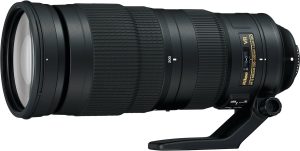
Diving into astrophotography with the Nikon AF-S NIKKOR 200-500mm f/5.6E ED VR feels like unlocking a new level in a game where the rewards are stellar views you never thought possible from your backyard. Its knack for pulling distant galaxies closer than ever, coupled with tech that keeps your shots sharp as a tack, sets you up for a cosmic journey that’s both epic and surprisingly accessible. Strap in; we’re not just aiming for the stars—we’re going for a close-up.
The Good Stuff:
- Nails specific deep-sky shots without a tracker mount, making it your cosmic cheat sheet for capturing celestial wonders.
- Vibration Reduction turns shaky hands into steady shots, ensuring that long exposures don’t blur your cosmic conquests.
- A steal for a telephoto lens with this kind of astrophotography prowess, proving you don’t need to sell a kidney for top-tier sky shots.
The “Meh” Parts:
- Size and weight that feels like lifting a small black hole, not exactly a grab ‘n go gear unless you’re also looking for a workout.
- F/5.6 aperture won’t break speed records, meaning you’ll need patience and time for those faint, faraway subjects.
- Sharpness at the edges could be better; it’s like having a slight blur at the edge of your vision—noticeable, but not a deal-breaker.
- Lacks weather-sealing, so maybe don’t get too close to that galaxy-sized puddle.
Overall Score: 40/50
5. Nikon NIKKOR Z 14-24mm f/2.8 S – Best Wide Angle
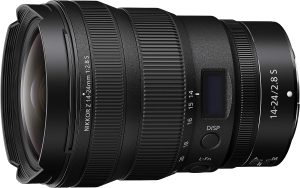
Imagine being able to capture the night sky in all its vastness, with every star glittering like a piece of cosmic confetti. The Nikon NIKKOR Z 14-24mm f/2.8 S is your ticket to that ultra-wide panoramic view of the heavens, making even the darkest night burst with light and color. It’s a bit like having a superhero cape for your camera—suddenly, capturing the Milky Way isn’t just possible; it’s a thrilling adventure.
The Good Stuff:
- Captures vast landscapes that make the Milky Way look like it’s just hanging out in your backyard, ready for its close-up.
- Fast f/2.8 aperture lights up the night, reducing those pesky star trails even when you dial back on the shutter speed.
- Perfect for panoramas that need that epic wide field of view, turning a simple night shoot into a cosmic voyage.
The “Meh” Parts:
- Ultra-wide angle might not be everyone’s cup of tea for picking out individual celestial bodies, but it’s a dream for grand vistas.
- Vignetting becomes the uninvited guest at wider apertures, dimming the party at the corners.
- Bulk and heft that says “I’m worth it” in weight, making it less than ideal for those long treks under the stars.
- Price tag that might make your wallet weep, but for the views? Possibly worth every penny.
Overall Score: 28/50
Final Thoughts On Best Nikon Lens For Astrophotography
Choosing the ultimate astrophotography lens for your setup shouldn’t be as tricky as threading a spaceship through an asteroid belt.
We’ve zipped through the galaxy of options to spotlight the real stars, aiming to make your decision feel more like cruising on autopilot than navigating a cosmic storm.
While many lenses have their moments in the sun, there’s a clear winner.
Overall, the Sigma 17-50mm f/2.8 OS HSM emerges as the supernova for most astrophotographers.
Despite that, each lens in my lineup brings its unique zest to your night-sky captures—because in the vast universe of photography, it’s all about finding the right companion for your celestial journeys.
I’ve laid everything on the table—highs, lows, and all the gritty details—in true unvarnished fashion. Now, it’s time to take the helm. Explore, experiment, and discover which lens elevates your astrophotography from earthly snapshots to cosmic masterpieces.
Sources
- https://www.sigma-global.com/en/lenses/
- https://www.kenrockwell.com/
- https://www.nikonusa.com/en/nikon-products/
- What Cameras Can You Use on PS5? A Compatibility Guide in 2024 - January 14, 2024
- What Cameras Support Windows Hello? A Guide to Compatible Devices - January 13, 2024
- 11 Best Cameras For Security With Night Vision In 2024 - August 9, 2023


